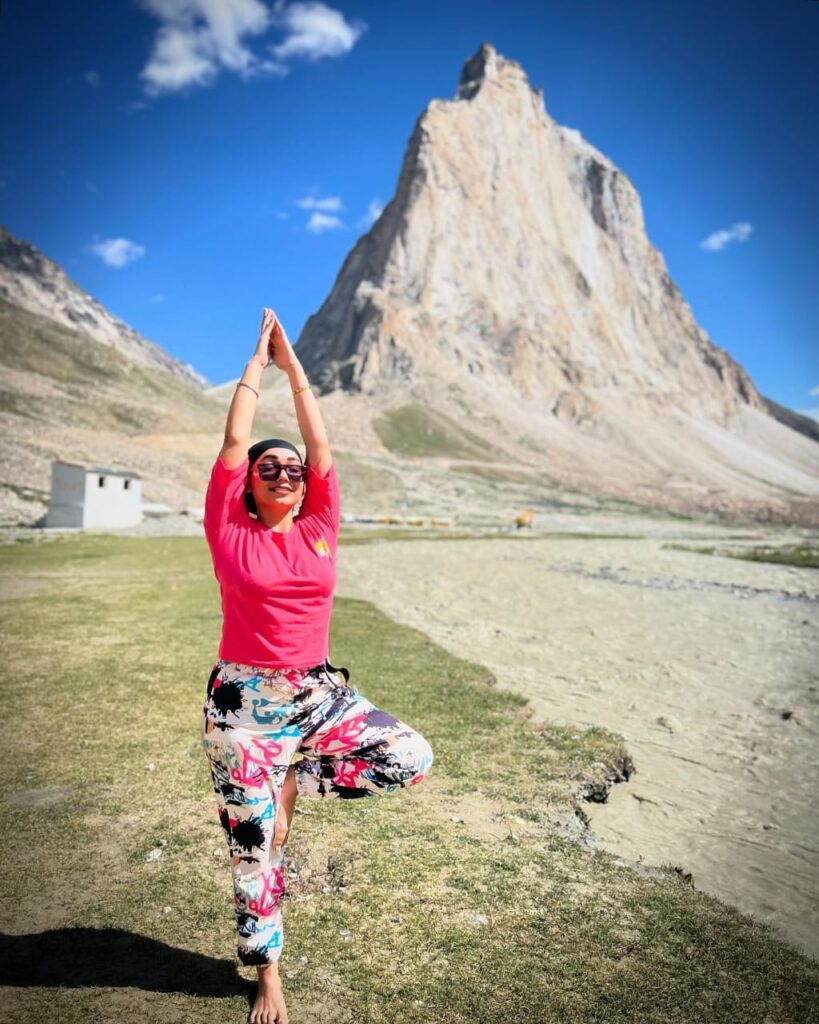Yoga, an ancient practice originating in India over 5,000 years ago, has evolved into a global phenomenon, celebrated for its profound impact on physical, mental, and spiritual well-being. Rooted in the Sanskrit word “yuj,” which means to unite or integrate, yoga embodies the union of mind, body, and spirit. This holistic approach to health and wellness is more relevant than ever in our fast-paced, modern world.

The Physical Benefits of Yoga
1. Flexibility and Strength:
Regular yoga practice enhances flexibility, improves muscle tone, and builds strength. Poses like Downward Dog, Warrior, and Tree Pose stretch various muscle groups, promoting agility and resilience. Flexibility not only helps in performing daily tasks with ease but also prevents injuries by increasing the range of motion. Strengthening the muscles through yoga helps in maintaining a healthy weight and improving overall physical fitness.
2. Better Posture:
Yoga encourages body awareness, helping practitioners maintain proper alignment. Poses such as Mountain Pose and Cobra Pose foster a strong, balanced posture, reducing the risk of back pain and improving overall body mechanics. Good posture is essential for preventing chronic pain and enhancing the body’s efficiency in daily activities. By aligning the spine and reinforcing the core muscles, yoga practitioners often experience relief from tension headaches and improved digestion.

3. Improved Breathing:
Pranayama, the practice of breath control, is a central aspect of yoga. Techniques like Ujjayi and Kapalabhati improve lung capacity, enhance oxygen intake, and promote respiratory health. Controlled breathing also calms the nervous system, reducing stress and anxiety. By focusing on the breath, individuals can cultivate mindfulness, which helps in managing emotions and improving concentration.
4. Enhanced Circulation:
Yoga stimulates blood flow, ensuring that oxygen and nutrients reach every cell. Inversions like Shoulder Stand and Legs Up the Wall promote venous return, improving circulation and reducing the risk of cardiovascular issues. Enhanced circulation also aids in detoxifying the body, boosting the immune system, and maintaining healthy skin.
Mental and Emotional Benefits
1. Stress Reduction:
Yoga is a powerful stress reliever. The combination of physical movement, breath control, and meditation calms the mind and reduces the production of stress hormones. This holistic approach alleviates anxiety and promotes emotional balance. Regular practice of yoga has been shown to decrease cortisol levels, the primary stress hormone, leading to a more relaxed and positive state of mind.

2. Mental Clarity:
Practicing mindfulness and meditation in yoga enhances mental focus and clarity. Techniques like Dharana (concentration) and Dhyana (meditation) train the mind to remain present, improving cognitive function and decision-making skills. By reducing mental clutter, yoga helps individuals to think more clearly, make better decisions, and improve their productivity in various aspects of life.
3. Emotional Balance:
Yoga fosters emotional resilience by promoting self-awareness and acceptance. Through practices like Savasana (Corpse Pose) and guided relaxation, individuals learn to release negative emotions, fostering a sense of inner peace and contentment. This emotional stability is crucial for developing healthy relationships and maintaining a positive outlook on life.
Spiritual Growth

1. Connection to Self:
Yoga is a journey inward, encouraging practitioners to explore their true selves. This introspection cultivates a deeper understanding of one’s thoughts, emotions, and desires, leading to personal growth and self-discovery. By connecting with their inner selves, individuals can identify their true passions and purpose in life, leading to a more fulfilling existence.
2. Sense of Unity:
The practice of yoga fosters a sense of connection and unity with the world. Through community classes and shared experiences, practitioners develop a sense of belonging and empathy towards others. This sense of unity extends beyond the yoga mat, promoting a more compassionate and inclusive society.
3. Higher Consciousness:
Advanced yoga practices, such as Kundalini and Raja Yoga, aim to awaken higher states of consciousness. These practices involve deep meditation, breathwork, and energy control, guiding individuals towards spiritual enlightenment and a profound sense of inner peace. Achieving higher consciousness allows individuals to transcend their ego, experiencing a deep connection with the universe and a sense of oneness with all living beings.
Integrating Yoga into Daily Life

Incorporating yoga into daily life is accessible and beneficial for everyone, regardless of age or fitness level. Here are some tips to start your yoga journey:
1. Start Small:
Begin with short, simple sessions. Even 10-15 minutes of daily practice can yield significant benefits. Starting small helps in building a consistent routine, which is more sustainable in the long run. Gradually increasing the duration and intensity of your practice can lead to more profound benefits.
2. Create a Dedicated Space:
Designate a quiet, comfortable space for your practice. A clean, clutter-free area with a yoga mat is ideal. Personalizing your space with elements like soft lighting, calming scents, and inspirational quotes can enhance your practice, making it a sanctuary for relaxation and rejuvenation.
3. Consistency is Key:
Regular practice is more important than duration. Aim to practice yoga consistently, gradually increasing the time and intensity. Establishing a routine, whether it’s practicing yoga in the morning to energize your day or in the evening to unwind, can help in making yoga a permanent part of your lifestyle.
4. Listen to Your Body:
Respect your body’s limits and avoid pushing into pain. Yoga is a personal journey, and progress comes with patience and persistence. It’s essential to focus on your own practice without comparing yourself to others. By listening to your body, you can avoid injuries and enjoy a safe and effective practice.
5. Seek Guidance:
Consider joining a yoga class or following online tutorials to learn proper techniques and stay motivated. Learning from experienced instructors can provide valuable insights into the nuances of various poses and help in correcting any mistakes. Engaging with a community of fellow practitioners can also provide support and encouragement.

Conclusion
Yoga is more than a physical exercise; it is a comprehensive approach to holistic well-being. By integrating the physical, mental, and spiritual aspects of yoga into your daily routine, you can transform your life, achieving a state of harmony and balance. Whether you seek flexibility, stress relief, or spiritual growth, yoga offers a path to wellness that can be tailored to your unique needs and aspirations. Embrace the journey, and discover the transformative power of yoga.
In conclusion, yoga provides a sanctuary from the stresses of daily life, offering a pathway to a healthier, more balanced existence. Its benefits are vast and varied, encompassing physical health, mental clarity, emotional stability, and spiritual growth. As you embark on your yoga journey, remember that the practice is deeply personal, allowing you to explore and understand your own needs and goals. With dedication and an open heart, yoga can lead to profound changes, enhancing your quality of life in ways you never imagined. So, roll out your mat, take a deep breath, and step into the transformative world of yoga.

![Stree 2 [2024] Hindi download 720P 480P HDTS Stree 2 download in hd](https://honestmitra.com/wp-content/uploads/2024/08/WhatsApp-Image-2024-08-22-at-15.21.11-150x150.jpeg)








